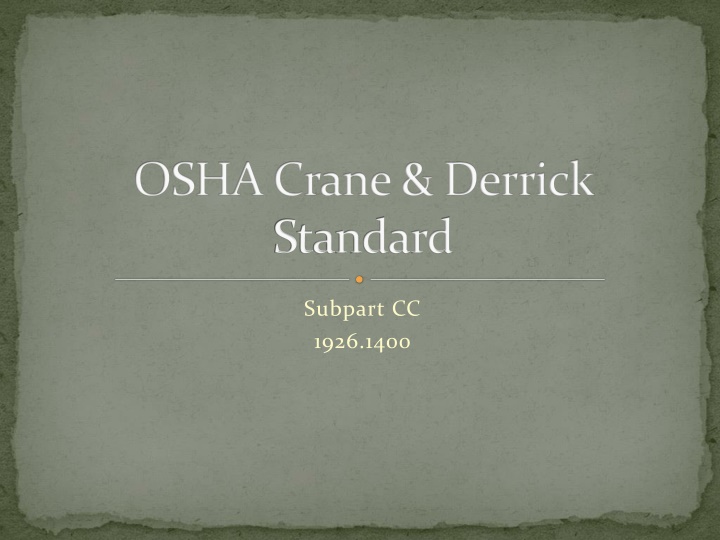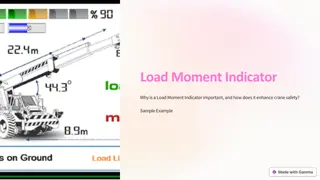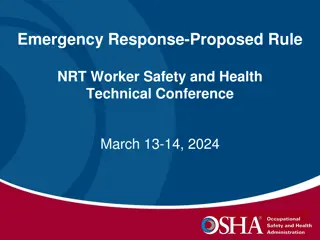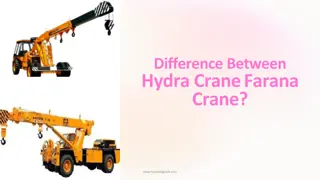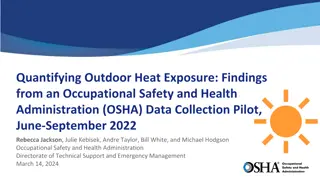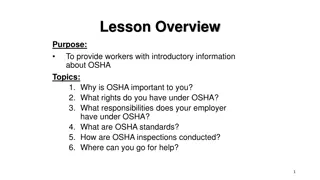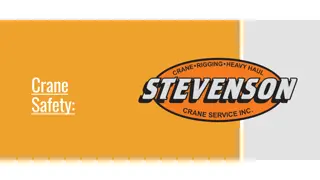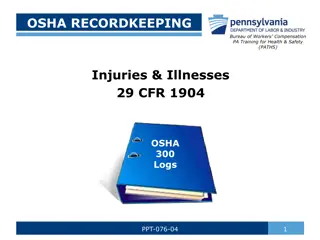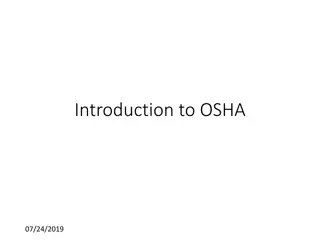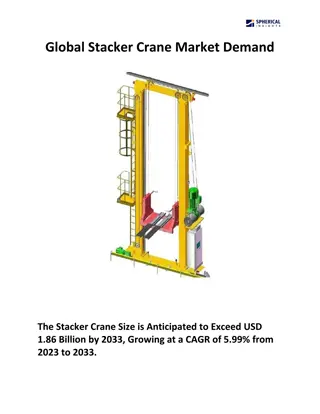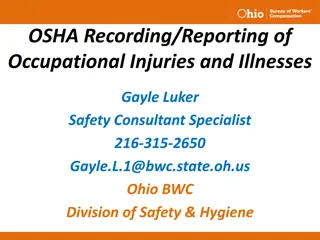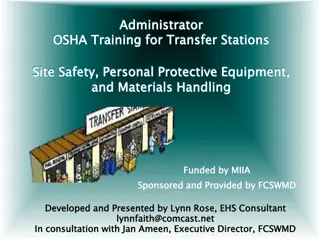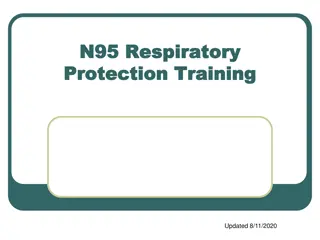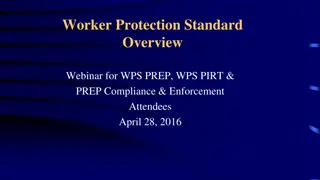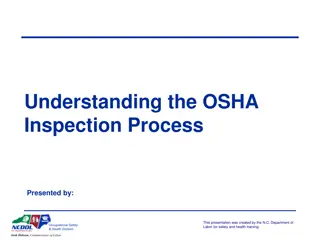OSHA Crane & Derrick Standard - Impact of Signalperson Qualifications
The requirements for a qualified signalperson as per OSHA standards, including qualifications, types of signals, evaluation methods, and necessary documentation. Understand the importance of signalpersons in ensuring safe crane and derrick operations.
Download Presentation

Please find below an Image/Link to download the presentation.
The content on the website is provided AS IS for your information and personal use only. It may not be sold, licensed, or shared on other websites without obtaining consent from the author.If you encounter any issues during the download, it is possible that the publisher has removed the file from their server.
You are allowed to download the files provided on this website for personal or commercial use, subject to the condition that they are used lawfully. All files are the property of their respective owners.
The content on the website is provided AS IS for your information and personal use only. It may not be sold, licensed, or shared on other websites without obtaining consent from the author.
E N D
Presentation Transcript
OSHA Crane & Derrick Standard Subpart CC 1926.1400
Qualified Signalperson Qualified person means a person who, by possession of a recognized degree, certificate, or professional standing, or who by extensive knowledge, training and experience, successfully demonstrated the ability to solve/resolve problems relating to the subject matter, the work, or the project.
Signals Signal person when required: Signal Types: Hand, voice, audible or new Only time an operator can use a cell phone is while lifting as part of a planned procedure Point of operation not in full view of operator View of direction of travel is obstructed Site specific safety concerns 1926.1428 Signal person qualifications 4
Signals (contd.) Signal person qualifications Qualified how Documentation Portable 3rd party qualified evaluator Yes Yes Employer Qualified Evaluator Yes No 5
Signals (contd.) Qualification Requirements: Know & understand signals Competent in using signals Basic understanding of crane operation Verbal or written test + practical test 6
Qualified Rigger 1926.1404 (r) Meets the criteria for a qualified person Possession of a recognized degree, certificate, or professional standing, or extensive (rigging) knowledge, training and experience Successfully demonstrated the ability to solve/resolve problems (relating to rigging)
Crane or Not Crane? Functional description Can hoist, Lower and Horizontally move a suspended load Forklifts configured to hoist and lower (by means of a winch OR hook) and horizontally move a suspended load are covered Forklift with attached boom. 1926.1400 (c)(8) Backhoes are excluded even if used like a crane .1926.1400 (c)(2) See 1926.1441 if using equipment with a rated hoisting/lifting capacity of 2,000 pounds or less
1926.1408 Power Lines Step 1: Identify Work Zone Work Zone = Marking boundaries OR 360 degrees around crane up to maximum working radius Make the power line hazard assessment 10
Could you get within 20 feet of power line? YES NO Option #1 Deenergize & Ground No further action Encroachment Prevention measures Option #2 20 foot clearance Planning meeting If tag lines used Non-conductive Elevated warning lines, barricade or line of signs Option #3 Ask Utility for Voltage and Use Table A (with minimum clearance distance) PLUS (Choose one): Proximity alarm, spotter, warning device, range limiter, or insulating link 11
Table A Minimum Clearance Distances Voltage (nominal, kV, alternating current) up to 50 over 50 to 200 over 200 to 350 over 350 to 500 over 500 to 750 over 750 to 1000 over 1000 Minimum clearance distance (feet) 10 15 20 25 35 45 (as established by the power line owner/operator or registered professional engineer who is a qualified person with respect to electrical power transmission and distribution) 12
Intentionally Working Closer Than Table A Zone 1910.1410 Paragraph (b) requires the employer to consult with the utility owner/operator before deciding that it infeasible to deenergize and ground the lines or relocate them. Employer can establish this distance by either having the utility owner/operator determine the minimum clearance distance that must be maintained or by having a registered professional engineer who is a qualified person with respect to electrical transmission and distribution determine the minimum clearance distance that must be maintained.
Intentionally Working Closer Than Table A Zone All of the following are required: Must show: 1926.1410 Staying outside zone is infeasible Infeasible to de-energize and ground 1. PL owner sets minimum approach distance 2. Planning meeting procedures 3. Dedicated spotter 4. Elevated warning line or barricade 5. Insulating link/device 6. Non-conductive rigging 7. Range limiter (if equipped) 8. Non-conductive tag line (if used) 9. Barricades - 10 feet from equipment 10. Limit access to essential employees 11. Ground crane 12. Deactivate automatic re-energizer 14
Operator Qualifications and Certifications -4 Options OPTION 1: Accredited testing organization OPTION 2: Employer qualification program OPTION 3: U.S. military OPTION 4: State/local gov t license 16
Operator Qualifications and Certifications (cont d) Portable Valid Accredited testing organization Employer Qualification Program YES * 5 years NO 5 years US Military license NO * Set by issuing entity Set by issuing entity, not > 5 years State/local license NO * Valid only in entity s jurisdiction 17
Written Certification Tests Administered in any language understood by the operator candidate. Test must cover: Controls/performance characteristics Calculate capacity (w/ or w/out calculator) Preventing power line contact Ground support Read and locate info in operating manual Appendix Q subjects
Practical Examination Must be well designed and sufficiently comprehensive Must have the demonstrated the skills and knowledge needed to operate the equipment safely. An operator's ability to handle unusual worksite conditions, such as adverse weather or working on crowded jobsites, are hazards that are not commonly part of this exam.
"Operator in Training" An Operator who does not have a certification on August 8th, 2014 will be considered an Operator in Training, regardless of previous experience. Must operate under the direct supervision of a Certified Operator Establishes the criteria when an Operator in Training may work. Rules for maximum time operating w/o a Certified Operator.
Ground Conditions 1926.1402 (b) Ground conditions must be firm, drained, and graded Use supporting materials, Use equipment manufacturer's specifications for adequate support Use equipment manufacturer's specifications for degree of level of the equipment
Controlling Entity 1926.1402 (c)(3) Must ensure that ground preparations are safe Must inform the user of the equipment and the operator of the location of known hazards beneath the equipment set-up area (such as voids, tanks, utilities) If there is no controlling entity then the employer that has authority at the site to make or arrange for ground preparations must do so.
Assembly Disassembly Employers must use a qualified rigger for rigging operations during assembly & disassembly Two options: Manufacturer procedures or Employer procedures (criteria requirements). Employer procedures cannot be used if using synthetic rigging.
Assembly/Disassembly Supervisor Must understand procedures Review procedures (unless they ve used them before) Check that crew members understand their tasks, hazards Follow manufacturer s prohibitions When using outriggers - fully extended or deployed per the load chart
Assembly/Disassembly (contd) A/D supervisor addresses 12 key hazards, including: Adequate site and ground conditions Sufficient blocking for load and stability Suitable boom and jib pick points Identify center of gravity Stability for pin removal Consider wind speed and weather 25
Assembly/Disassembly (contd) The suitability of blocking material Verification of the loads for assist cranes Snagging of cables or components Struck by counter weights Boom hoist brake failure Loss of backwards stability 26
Fall Protection Requirements for manufacturers to provide walkways and consider fall protection during design of machines. During non-A/D work employees must be tied off when exposed to a 6 fall. When moving point-to-point on non-lattice booms On lattice booms that are not horizontal On horizontal lattice booms that have a fall distance of 15 or more. 27
Fall Protection While at any workstation or any part of the equipment (including any boom), except when the employee is near the draw-works (when running), in the cab or on the deck. For A/D work the employer must supply and ensure that all employees on a walking/working surface with an unprotected edge more than 15 above a lower level are protected from falls. EXCLUDING when working at or near the draw- works while the machine is running. 28
1926.1412 Inspections Type of Inspection: Who Inspects: Modified or Repaired/ adjusted Qualified Post-assembly Qualified Shift Competent Monthly Competent Annual Qualified 29
Inspections (contd) Shift = visual inspection for apparent deficiencies Monthly = documented shift inspection Annual = comprehensive, every 12 months 30
Each Shift Inspection 1926.1412 (d) Apparent deficiencies Control and Drive mechanisms Hydraulics Hooks Wire Rope Electrical Ground Conditions Levelness of the crane Operator view All Safety Devices Operational Aids are working
Operators 1926.1417 has many requirements. Some highlights are: Must not engage in any activity that diverts his/her attention while operating the equipment, No cell phones (other than when used for signal communications) Must not leave the controls while the load is suspended, (four exceptions) Must verify that the load is within the rated capacity of the equipment (2 methods) Must obey a stop (or emergency stop) signal, irrespective of who gives it. Told of any employee entering the crane work area 1926.1424(a)(3)
Employer Training 1926.1430 Employee Training Issues Must confirm that the employee understands the information provided in the training Powerline safety Signal persons Provide the training at no cost to the employee Operators Competent Person Qualified Persons Crush Pinch point hazards Tagout for repair
Work Area Control 1926.1424 Train each employee assigned to work on or near the equipment Erect and maintain control lines, warning lines, railings or similar barriers to mark the boundaries of the hazard area (1 Exception)
